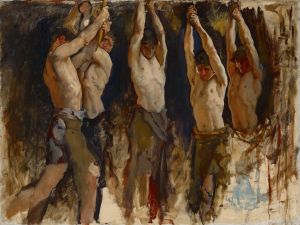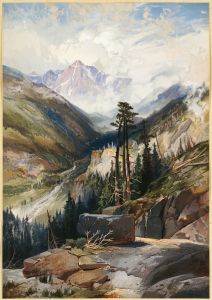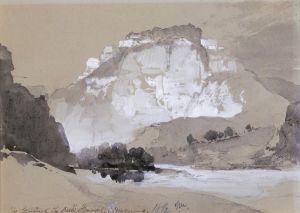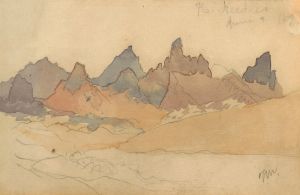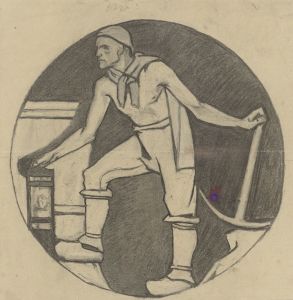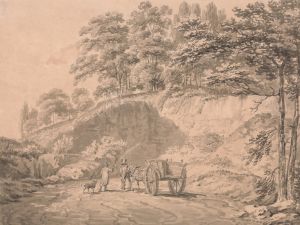
Smelting Works at Denver
A hand-painted replica of Thomas Moran’s masterpiece Smelting Works at Denver, meticulously crafted by professional artists to capture the true essence of the original. Each piece is created with museum-quality canvas and rare mineral pigments, carefully painted by experienced artists with delicate brushstrokes and rich, layered colors to perfectly recreate the texture of the original artwork. Unlike machine-printed reproductions, this hand-painted version brings the painting to life, infused with the artist’s emotions and skill in every stroke. Whether for personal collection or home decoration, it instantly elevates the artistic atmosphere of any space.
"Smelting Works at Denver" is a painting by the American artist Thomas Moran, created in 1882. Thomas Moran (1837-1926) was a prominent painter and printmaker of the Hudson River School, known for his dramatic landscapes of the American West. His works played a significant role in the development of the national park system in the United States.
The painting "Smelting Works at Denver" depicts an industrial scene in Denver, Colorado, during the late 19th century. This period was marked by rapid industrialization and economic growth in the American West, driven in part by the mining industry. Smelting works were facilities where ore was processed to extract valuable metals such as gold, silver, and copper. These operations were crucial to the mining industry, which was a significant contributor to the economy of Colorado and the broader region.
In "Smelting Works at Denver," Moran captures the industrial landscape with a keen eye for detail and atmosphere. The painting shows the smelting works with its towering smokestacks emitting plumes of smoke, set against the backdrop of the Rocky Mountains. The contrast between the natural beauty of the mountains and the industrial activity in the foreground highlights the transformative impact of human enterprise on the environment.
Moran's use of light and color in the painting is notable. He employs a palette that conveys the harshness of the industrial setting while also capturing the subtle beauty of the surrounding landscape. The smoke from the smelting works creates a hazy atmosphere that softens the outlines of the buildings and mountains, adding a sense of depth and complexity to the composition.
Thomas Moran's interest in industrial subjects was relatively rare among his contemporaries, who often focused on more pristine natural landscapes. However, his depiction of the smelting works reflects a broader trend in American art during the late 19th century, where artists began to explore themes of industry and progress. This painting provides valuable insight into the industrial history of Denver and the role of the mining industry in shaping the American West.
"Smelting Works at Denver" is part of the collection of the Denver Art Museum, which houses a significant number of works by Thomas Moran. The painting is an important example of Moran's ability to blend natural and industrial elements in his work, offering a nuanced perspective on the American landscape during a time of significant change.
Overall, "Smelting Works at Denver" by Thomas Moran is a historically significant painting that captures the essence of industrialization in the American West. It stands as a testament to Moran's skill as an artist and his ability to document the changing landscapes of his time.





